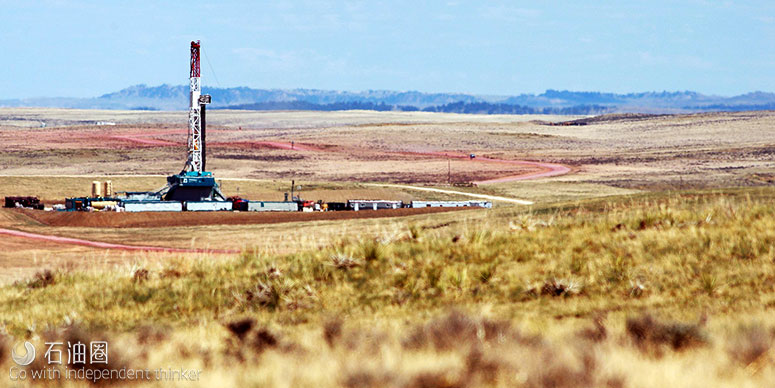Oil and gas operators throughout North America’s shale plays have chosen the plug-and-perforate (PnP) method as the most common technique for multi-stage completions, and have accepted the method’s complexity to achieve better frac jobs and potentially higher production. Yet, as operators in unconventional fields strive to improve efficiency and reduce cost, they can save time and money by taking a new approach to optimizing PnP completions.
WELLSITE COMMUNICATIONS
Wellsite communications should begin during the planning stage. Wellsite personnel should be fully aware of the well configuration and completion design called for by engineering personnel in the office. The company representative should hold a pre-job meeting to make sure that personnel from wireline and pressure control, plug and pumping contractors have reviewed and understand all procedures applicable to them.
During operations, it is important for wireline, plug and pumping personnel to be in constant communication. Coordination between wireline and pump operations is critical to running plugs quickly, and to avoiding plug-related issues.
In addition to maintaining good communication, wellsite crews should take a disciplined approach to carefully recording parameters, including depths, flowrates, pressures, wireline speeds, etc., at every stage of the job. This information is vital for making decisions that prevent problems and optimize performance.
RIGGING UP PNP EQUIPMENT
During rig-up with most composite plugs, the plug is made up to the setting tool on the perforating string, while the string is laid out horizontally on tool stands. This configuration makes it difficult to ensure that the setting tool piston is in the right position and does not contain trapped air. Installing a plug horizontally also increases the risk of damage to that plug, when it is lifted from the ground to the lubricator. If this procedure must be followed, a dolly should be used to support the plug and keep it from bending.
Downhole Technology designed the setting kit (compatible with both Baker and Owen setting tools) and its plugs to enable plug installation while the perforating string is in the vertical position. This permits the operator to more easily confirm that the setting tool is properly dressed, and enables faster makeup of the plug to the string.
PLUG SELECTION
In wells employing the PnP completion method, operators are using tighter stage spacing, with 20 to more-than-100 plugs used during multi-stage fracturing. Therefore, a plug’s running, setting, ability to seal during fracturing, and removal, are critical features that can affect each well’s economics.
Most frac plugs are derived from cast iron plugs used for temporary zonal isolation, with slips and seals proven on retrievable packers. Composite materials were introduced in the 1990s to make plugs easier to mill—and other incremental design changes have been incorporated—but most plugs still resemble their cast iron predecessors. These plugs continue to pose operational problems, such as slow running speeds, excessive water use for pumpdown, premature setting, failure under pressure, and long drill-out times.
Downhole Technology’s firm has introduced a new plug design, and a new approach to PnP operations, that enable plugs to be run at high speeds with less water consumption, Fig. 2. The Boss Hog frac plug is half the length and weight of typical frac plugs, with an up-to-15,000-psi pressure rating. It is constructed from filament-wound composite material, rather than from composite sheets or extruded components, and has a modular design with far fewer parts than previous plugs. During drill-out, the filament-wound composite is reduced to small, hair-like cuttings that are easily returned to surface.
Unique features of the Boss Hog plug include a one-piece composite top slip with mild steel buttons, instead of tungsten or stainless steel, to prevent casing damage, and a cast-alloy lower slip that holds up to 15,000 psi of pressure and drills out into fine particles during removal.
The plug also includes a fluid propulsion component that greatly enhances pumpdown efficiency. The Heli-Seal system opens to capture water while pumping and safely propels the plug downhole at speeds of over 1,100 ft/min., while using up to 50% less water than is required with plugs that do not have a fluid propulsion module.
After perforating, the next step typically is to pump down a ball to seat the plug before fracturing. New ball-in-place plugs can save up to 30 min. per stage and eliminate water used for ball pumpdown. This also eliminates the worry of pushing away the already placed near bore proppant on the previous stage. Plugs with this feature also provide the capability to pressure-test plugs before fracturing and provides the ability to break down the first few clusters that normally don’t get broken down. Unlike ball check versions, the ball can be circulated back to surface in the event that the guns do not fire. Where low pressures and the ability to flow the ball back are a concern, there is an option for disolvable ball avoiding TCP or tractor runs.
RUNNING PLUG PROCEDURES
Manufacturers of older frac plug designs recommend that plugs should not be run at speeds faster than 250 ft/min. Our new-generation plugs can be safely run at speeds in excess of 1,100 ft/min., when they are deployed with the new procedures.
The key to increasing the speed and reliability while running composite plugs is to base the operation on the AV of the fluid flowing past the frac plug and perforating assembly, rather than on the pump rate. Traditionally, plug suppliers have provided tables correlating pump rate and pumpdown speed for plugs of given diameters running in various casing sizes. The values in these tables seldom match actual running rates, so they can only provide a rough approximation of what wireline operators can expect.
Annular velocity is a much more accurate and predictable parameter during PnP operations. In calculating annular velocities, it is important to take into account any changes in casing ID, liner tops, patches, high deviations, etc., because these changes affect the AV as the PnP assembly passes through the reduced or increased casing profile.

 石油圈
石油圈
